
File image of Andrew Symonds (R) and Harbhajan Singh during the infamous second Test of the 2008 series. (Getty Images)
Loading...
Shortly afterwards, the Australians filed a complaint against Harbhajan Singh, accusing him of racism. Standing at the non-striker’s end, Harbhajan had apparently called Andrew Symonds, then at mid-off, a “monkey”.
This was 2008, when ICC had adopted a zero-tolerance stance towards racism. As match referee, Procter had himself overseen the placement of the anti-racism posters across SCG.
That evening, Indian captain Anil Kumble and manager Chetan Chauhan asked Harbhajan for his version in front of the team. Harbhajan confessed to using “maa ki”. This near-homophone of “monkey”, admittedly a common North Indian curse word, was not a racist slur.
“That was good enough for us,” recalled VVS Laxman, but not “for the opposition or the authorities.” Sachin Tendulkar, who was at the striker’s end during the incident, corroborated this in his autobiography.
In the post-match inquiry, Ponting, Tendulkar, and the umpires – Steve Bucknor and Mark Benson – all admitted to not hearing anything of the sort. On the other hand, Adam Gilchrist and Matthew Hayden backed Symonds’s allegations.
Chauhan produced an album of “princes and princesses in regal dress but with monkey heads” to explain why it would be sacrilegious for an Indian to use “monkey” in a derogative sense.
Procter banned Harbhajan for three Tests. “One group was telling the truth”, he informed, which obviously did not go down well with the Indians. As most team members waited in the coach that would take them to Canberra for a tour match (they watched Anees Bazmee’s Welcome as they waited), the team management went into a conversation with BCCI.
The verdict was to stay put in Sydney. Several cricketers wanted to abandon the tour. In his autobiography, Adam Gilchrist slammed the threat as “a disgraceful act, holding the game to ransom unless they got their way.”
However, the tour, including the Canberra match, went on as BCCI appealed against the verdict. In the re-hearing at Adelaide, chaired by John Hansen, Tendulkar announced that Harbhajan had uttered “maa ki”, changing the proceedings on its head.
Harbhajan, who had not played the Perth Test in the interim period, took field in the final Test of the series, at Adelaide.
“Where was this testimony when it was originally asked for? … Tendulkar never came forward with that version to us in the initial hearing, which left me with very little choice,” a disgruntled Procter would later lament in his autobiography.
Amidst all this, the other controversy got buried. As Television replays would reveal, Bucknor and Benson’s umpiring in the Test was way below par, and nearly every wrong decision went in favour of the Australians. Following a BCCI appeal, Bucknor was removed from the Perth Test.
The Other Controversy
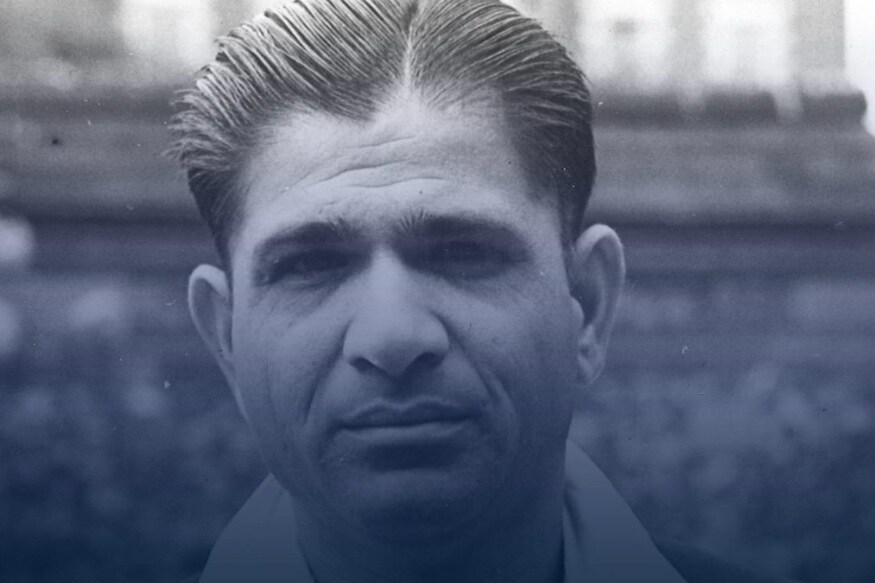 (Twitter @HomeofCricket)
(Twitter @HomeofCricket)It started during the tour match against an Australian XI, at Sydney, where Don Bradman famously scored his hundredth First-Class hundred. In a frantic fourth-innings chase, Bill Brown took off from the non-striker’s end.
But Vinoo Mankad did not release the ball. Instead, he issued Brown a warning, which fell on deaf ears. Brown erred again; Mankad whipped off the bails and appealed; and umpire George Borwick sent Brown off.
Mankad then ran through a very strong line up with 8/84 as the Indians pulled off one of their two wins of the 1947-48 tour – their first to Australia and first in any country after Independence.
Mankad’s act found support from Bill O’Reilly, who commented shortly afterwards: “There is nothing in the laws of the game to say that the bowler shall even warn the batsman of his unfair play. Mankad subscribed to the ethical rule … Brown was at fault.”
Three days later, Brown, the Queensland captain, stepped out of the crease in the tour match at Brisbane. This time Mankad warned him; there was no run out.
India were back at Sydney for the second Test. And for whatever reason, Brown decided he would get away again. By this time Mankad had enough: he ran out Brown without a warning.
Brown threw the bat on the pitch in disgust but had little option but to pick it up and walk back.
This caused a furore, dividing the cricket fraternity. “Brown learns the hard way; run out again,” ran the headline in The Sun (Sydney) for the piece penned by Ray Robinson.
On the other hand, Duleepsinhji took a different stance in his column in The Telegraph (Brisbane): “Although by the laws of cricket this was justified it leaves a bad taste. I hope I do not see another similar incident.”
But the overall support lay with Mankad. He found support even from the Australian fans. “If Brown does not know the rules or will not accept decisions in a sporting manner, he is not a proper person to play for Australia,” wrote one AW Richards in a letter to The Sydney Morning Herald.
Another reader, with initials IWM, wrote that “the only bad sportsmanship was shown by the batsman.”
Bradman, who led Australia in that Test, called the run out “scrupulously fair” in the autobiography.
This “genre” of run out came to be known as “Mankading” – though Lord Harris had pulled this off about six decades before Mankad in a Varsity match.
Amarnath’s Boldness
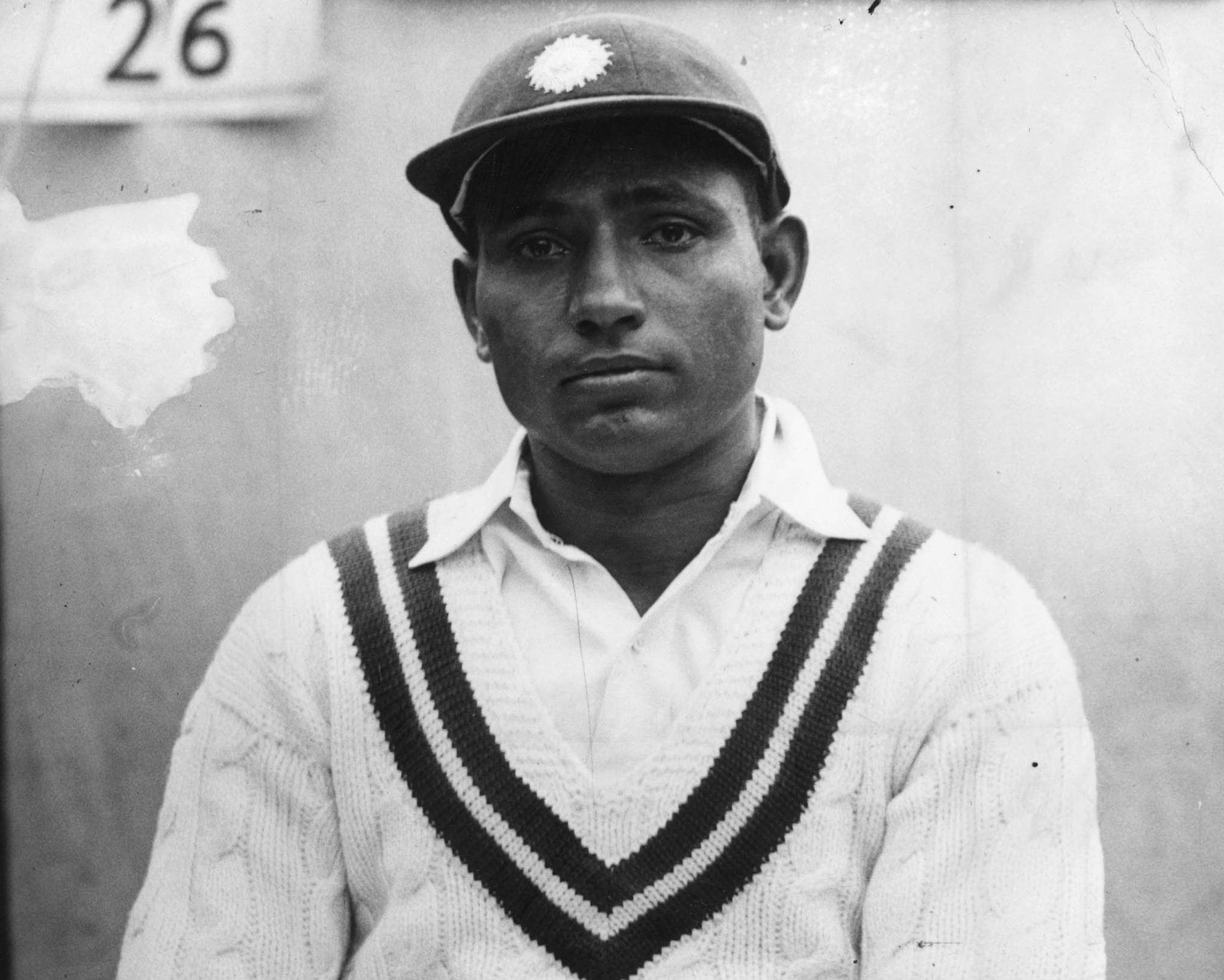 (Getty Images)
(Getty Images)Of their 11 Tests at Sydney India have won just one and lost five. They were outplayed several times, losing by 144 runs in 1968-69 and by an innings in 1980-81, 1999-00, and 2011-12, while Australia dominated the drawn Test of 2014-15.
There were shades of individual brilliance in these Tests. Kapil Dev and Karsan Ghavri claimed five wickets each in the only innings in 1980-81. Laxman’s 167 (out of a team score of 261) in 1999-00 is among the greatest innings the ground has seen. And Mohammed Shami took five wickets before KL Rahul and Virat Kohli got hundreds in 2014-15.
But what about the other Tests? India first played here in 1947-48, the one of Mankading fame.
Before the series, the Indians had announced that they would prefer uncovered wickets for the series. Bradman had tried to convince Indian captain Lala Amarnath, but to no avail.
Amarnath’s reasoning was sound: India’s only chance lay in catching the Australians on a sticky wicket. It might backfire, but Amarnath decided to gamble.
India were caught on a wet wicket after Bradman won the toss in the first Test at Brisbane. Ernie Toshack took 11/31 to bowl them out for 58 and 98.
But Amarnath won a crucial toss, and India put up 188 amidst rains. And on the third day, Amarnath’s plans finally bore fruit as Australia were shot out for 107 by Dattu Phadkar (3/14) and Vijay Hazare (4/29).
Unfortunately, it rained incessantly, and only ten hours of cricket was possible over the next three days. A draw was called with India on 61/7. A lead of 142 was substantial on the pitch, but there was nothing they could do.
Bradman won the other four tosses in the series. Australia won 4-0.
The Win
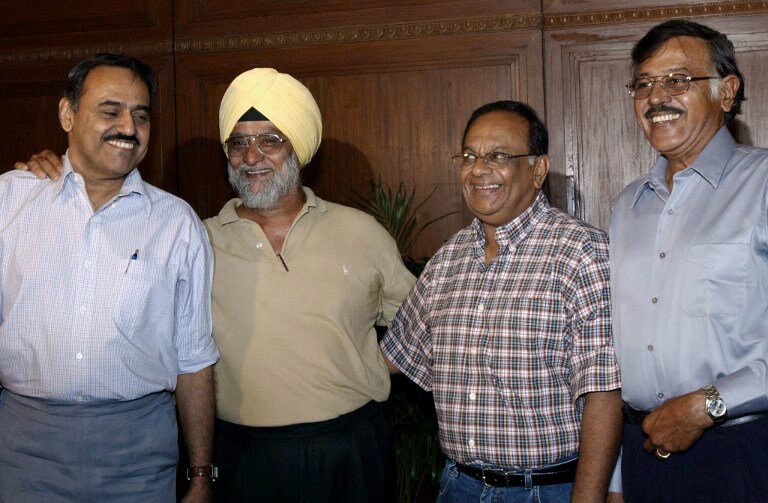 (AFP)
(AFP)India’s only win at the ground came in 1977-78 against a side depleted by Kerry Packer. Bishan Singh Bedi (3/49) and Bhagwat Chandrasekhar (4/30) bowled out Australia for 131. At stumps on Day One India were 86 without loss, firmly in control.
Bedi eventually declared on 396/8, with six batsmen going past forty but nobody reaching eighty. Then EAS Prasanna took 4/51 as India won by an innings and 2 runs, at that point their biggest margin of victory overseas.
The Innings Defeats that Got Away
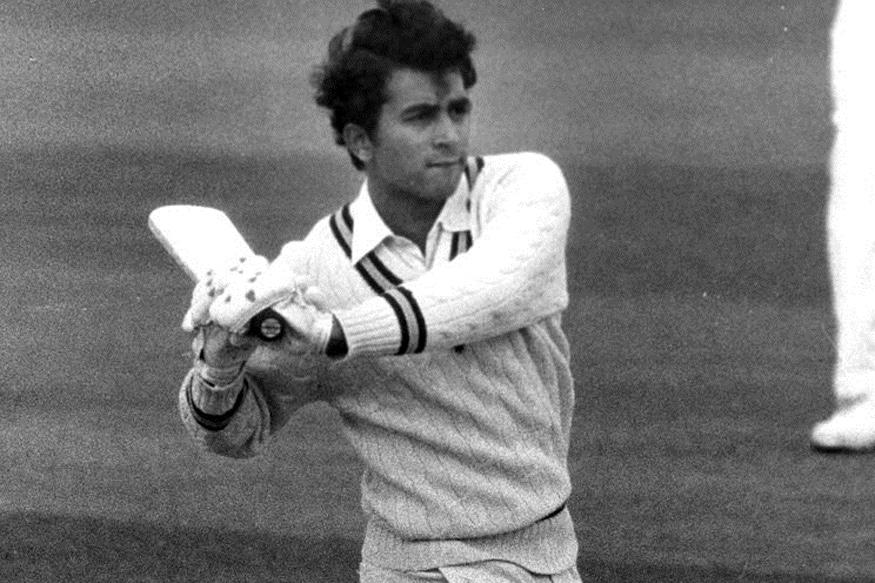
The 1985-86 and 1991-92 Tests at Sydney bore almost similar agony for Indian fans. In the former, India declared on 600/4. Sunil Gavaskar scored 172, thus completing the full set of scoring a hundred in each of the five Australian venues. Krishnamachari Srikkanth and Mohinder Amarnath also got hundreds.
The Test seemed to be headed for a draw at stumps on Day Four, with Australia on 347/4, but Ravi Shastri (4/101) and Shivlal Yadav (5/99) bowled out Australia for 396, with David Boon scoring 131. Shastri (2/36) and Yadav (3/19) put further pressure later that day, but Greg Ritchie batted for almost three hours to save the Test. Australia finished on 119/6.
Six years later, Boon (129*) again rose to the challenge to take Australia to 313. Shastri (206) and Sachin Tendulkar (148*) helped India to secure a 170-run lead as a debutant Shane Warne was hammered around for his 1/150.
Australia were quickly reduced to 114/6 before Allan Border and Merv Hughes resisted, the latter batting for 73 balls. Not for the first time, the Indians were not happy with the umpiring.
Warne walked out after Shastri (4/45) got the eighth wicket. Bruce Reid, injured and without any batting credentials, was the only man left. Unfortunately, by the time Border (53*) took Australia past the innings-defeat mark, there was no time left.
Surprisingly, Subroto Banerjee, the best bowler in the first innings (3/47), did not get a single ball in the second.
Steve’s Farewell, Almost Ruined
 (AFP)
(AFP)Tendulkar had not gone past 44 in the first three Tests of 2003-04. At Sydney, he assumed a Zen like mode by deciding to not have a go at anything outside off. He eventually scored 241 not out, his career-best at the time. A more pulsating show came from Laxman during his 178.
India declared on 705/7. Then Kumble took 8/141, but Sourav Ganguly did not enforce the follow-on despite the 231-run lead. He declared only when Rahul Dravid, 9 short of a hundred, was hit on the ear by Brett Lee.
India could still have won, but Kumble (4/138) never found support. Chasing 443, Australia finished on 357/6. Steve Waugh scored 80 in his last Test innings.
Not for the last time in India-Australia Tests at Sydney did Bucknor make glaring errors. He did not rule at least three LBW decisions in India’s favour – two of Justin Langer off Ajit Agarkar, one of Damien Martyn off Murali Kartik. All three were erroneous decisions, as replays revealed.
Bucknor & Benson and beyond
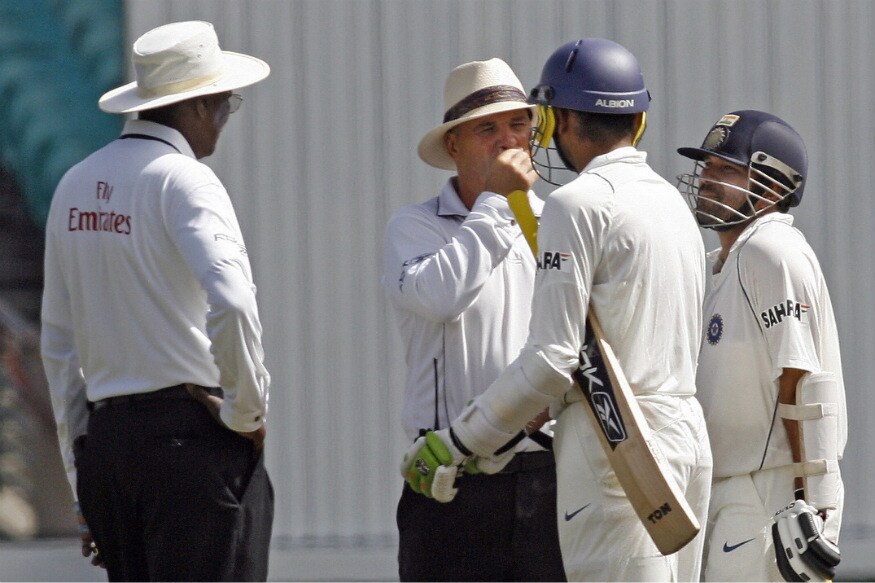 (AFP)
(AFP)We have already mentioned the glaring umpiring errors in the 2007-08 Test. We shall now touch upon some, which promoted Laxman to dismiss them as “incompetent, possibly even biased.”
India had Australia on the mat at 134/6 in the first innings. Then Symonds survived a big nick and slammed 162 not out to take Australia to 463. Laxman then got his third hundred (109) at Sydney in as many innings, while Tendulkar’s authoritative 154 not out helped India obtain a 59-run lead, but Symonds had scored too many.
Australia eventually set India 333. A set Dravid was soon beaten outside off by Symonds by some distance. Gilchrist, who had walked in the 2003 World Cup semi-final, appealed. Bucknor gave Dravid out.
Then Ganguly edged Lee, and the ball appeared to have fallen short of Michael Clarke at slip. Benson took the word of Clarke – who had refused to walk to a catch at slip earlier in the Test – and ruled Ganguly out.
Shortly afterwards, MS Dhoni was given leg-before to a ball that would have gone over the stumps.
“It seemed every decision that could go against us had done so,” Tendulkar later wrote.
With two overs left and three men standing, India should still have drawn the Test, but Clarke took three wickets in five balls to end things.
“We lost the series 1-2 when we all felt that we should have won it 2-1”, Laxman would later write in his autobiography.
Four years later India had another chance despite scoring 191. Zaheer Khan reduced Australia to 37/3, but that was it. Clarke slammed an unbeaten 329. With Ponting and Michael Hussey also getting hundreds, India lost by an innings inside four days despite responding with 400.
(Abhishek Mukherjee is a cricket historian and statistician. He can be followed on Twitter @ovshake42)
andrew symondsharbhajan singhIndia vs Australia 2018sachin tendulkarscgSydney Cricket GroundVinoo Mankad
First Published: January 1, 2019, 7:05 PM IST


 GET APP
GET APP
 After Perth, MCG Pitch Also Rated 'Average' by ICC
After Perth, MCG Pitch Also Rated 'Average' by ICC I'd Love to Get Back in the Yellow-and-green - Siddle
I'd Love to Get Back in the Yellow-and-green - Siddle Harbhajan Rubbishes Claim of “Monkeygate” Apology
Harbhajan Rubbishes Claim of “Monkeygate” Apology




